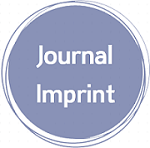Why did the COVID-19 Epidemic Stop in China and does not Stop in the Rest of the World? (Application of the Two-Component Model)
Downloads
The vastly different courses of the COVID-19 epidemic in China and the rest of the world are investigated and explained within two-component epidemic model. The model is based on separate accounting for the contribution to the epidemic from two types of immune response to a viral infection - innate and adaptive immunity. Any infected person becomes asymptomatic with probability (1-p) or symptomatic with probability p. In the first case, innate immunity is sufficient to protect a person. In the second case, innate immunity is insufficient, and adaptive immunity comes into play. In the asymptomatic state, the person remains outwardly healthy, mobile and can spread the infection. In the symptomatic state, the person becomes ill, isolated and cannot spread the infection. We assume that the contribution to the epidemic process from asymptomatic carriers is dominant in comparison with the contribution from the usual incubation period in the symptomatic state. The key parameters of the model are the virus lifetime T in the asymptomatic state and the spread rate β. At moderate βT values, the model describes a long, slowly decreasing morbidity plateau, which transforms into wave-like solution at βT >> 1. In the case of βT→∞, which corresponds to a stable non-pathogenic strain, the model solution is limited to single wave only. We believe that the spread of such a non-pathogenic strain and its subsequent dominance is responsible for ending the epidemic after the single wave of incidence in China. A way to stop the epidemic in the rest of the world may consist in displacing the circulating pathogenic virus with its stable non-pathogenic strain.
Doi:10.28991/SciMedJ-2021-0302-2
Full Text:PDF
Downloads
Dimaschko, J. (2020). Superspreading as a regular factor of the COVID-19 pandemic: I. A two-component model. doi:10.1101/2020.06.29.20138008.
Dimaschko, J. (2020). Superspreading as a regular factor of the COVID-19 pandemic: II. Quarantine measures and the second wave. doi:10.1101/2020.08.14.20174557.
Harko, T., Lobo, F. S. N., & Mak, M. K. (2014). Exact analytical solutions of the Susceptible-Infected-Recovered (SIR) epidemic model and of the SIR model with equal death and birth rates. Applied Mathematics and Computation, 236, 184–194. doi:10.1016/j.amc.2014.03.030.
Our World in Data. Available online: https://ourworldindata.org/coronavirus-data-explorer (accessed on January 2021).
Saad-Roy, C. M., Wingreen, N. S., Levin, S. A., & Grenfell, B. T. (2020). Dynamics in a simple evolutionary-epidemiological model for the evolution of an initial asymptomatic infection stage. Proceedings of the National Academy of Sciences, 117(21), 11541–11550. doi:10.1073/pnas.1920761117.
Robinson, M., & Stilianakis, N. I. (2013). A model for the emergence of drug resistance in the presence of asymptomatic infections. Mathematical Biosciences, 243(2), 163–177. doi:10.1016/j.mbs.2013.03.003.
Kemper, J. (1978). The effects of asymptomatic attacks on the spread of infectious disease: A deterministic model. Bulletin of Mathematical Biology, 40(6), 707–718. doi:10.1016/s0092-8240(78)80003-2.
Perets, H. B., & Perets, R. (2020). A preceding low-virulence strain pandemic inducing immunity against COVID-19. arXiv preprint arXiv:2007.07154.
Enjuanes, L., Sola, I., Almazan, F., Ortego, J., Izeta, A., Gonzalez, J. M., … Sanchez, C. (2001). Coronavirus derived expression systems. Journal of Biotechnology, 88(3), 183–204. doi:10.1016/s0168-1656(01)00281-4.
de Haan, C. A. M., van Genne, L., Stoop, J. N., Volders, H., & Rottier, P. J. M. (2003). Coronaviruses as Vectors: Position Dependence of Foreign Gene Expression. Journal of Virology, 77(21), 11312–11323. doi:10.1128/jvi.77.21.11312-11323.2003.
Murray J.D. Spatial Models and Biomedical Applications (2003). Springer, Berlin - New York. ISBN 0-387-95228-4.
Dimaschko, J., & Podolsky, V. (2020). Viral Mutations as a Possible Mechanism of Hidden Immunization and Containment of a Pandemia. doi:10.1101/2020.04.09.20059782.
Shaman, J., & Galanti, M. (2020). Will SARS-CoV-2 become endemic? Science, 370(6516), 527–529. doi:10.1126/science.abe5960.
Linde, A., Rotzén-Östlund, M., Zweygberg-Wirgart, B., Rubinova, S., & Brytting, M. (2009). Does viral interference affect spread of influenza? Eurosurveillance, 14(40). doi:10.2807/ese.14.40.19354-en.
- This work (including HTML and PDF Files) is licensed under a Creative Commons Attribution 4.0 International License.












